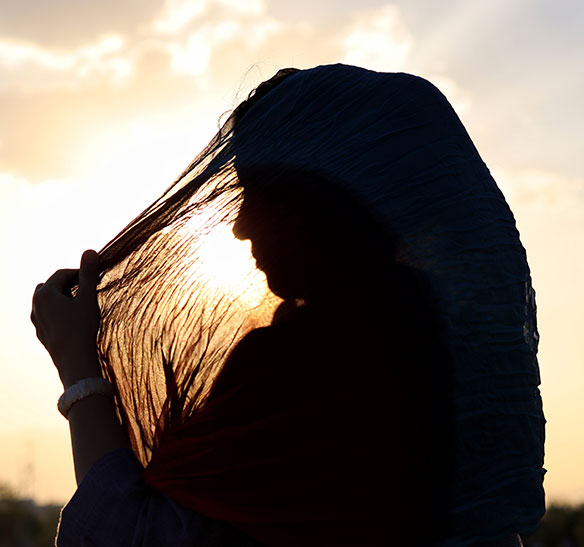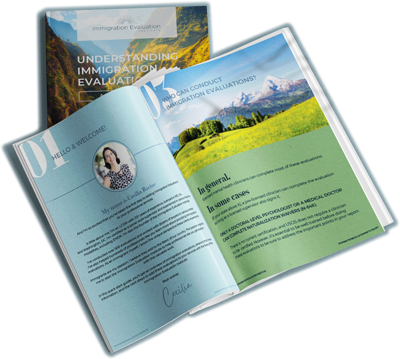What do you want to learn more about?
Women, Life, Freedom: What’s Happening in Iran

You’ve undoubtedly seen some of the news coverage and social media posts surrounding the current protests in Iran.
These latest protests are another stand against a regime that has existed for over forty years in the country, sparked by the murder of Mahsa Amini in September 2022.
In today’s blog, I wanted to highlight the history of what’s happening, why this movement is more critical than ever, and what it means for Iranian refugees here in the States.
What is the Women, Life, Freedom Movement?
Earlier this year, on the 16th of September 2022, Mahsa Amini, a 22-year-old woman from Saqqez, traveled to Tehran to visit family. She was with her brother, Kiaresh Amini, when she was arrested by the Islamic Republic’s ‘Guidance Patrol’ and transferred to the ‘Moral Security agency for questioning. Mahsa was arrested for wearing an ‘inappropriate’ hijab.
Her brother was told she would be taken to a detention center for a “briefing class.” Instead, Mahsa was released to Kasra Hospital.
Eyewitnesses report that she was beaten inside the security van that was supposed to take her to the detention center and delivered her to the hospital in a coma. Three days later, Mahsa died in the hospital from cardiac arrest related to severe head injuries.
Crowds gathered outside the hospital, shocked by the events and the denial from Tehran Police commander Hossein Rahimi that Mahsa’s death was anything but an “unfortunate accident.”
During Mahsa’s funeral on the 17th of September, crowds again gathered and began chanting the slogan ‘Women, Life, Freedom,’ which has become the roaring cry of a community located worldwide against the decades of oppression they have faced.
What Are Iranians Protesting Against?
The current protests are not unprecedented – they are the latest in a long history of protests in the Iranian community dating back more than a century to Iran’s Constitutional Revolution, which established a parliament during the Qajar dynasty between 1905 and 1911.
Since the Iranian Revolution of 1979, the Islamic Republic of Iran has been in power, with dire outcomes for the Iranian people, particularly women.
Under the laws of the Islamic Republic, women are subjected to compulsory veiling but also to gender segregation, including ‘Women only’ areas in public city places. These non-negotiable arrangements are considered pillars of the Islamic Republic. The creation of the ‘Moral Security’ sees women policed when they are out in the street – any slight digression can be considered an arrestable offense according to these forces. From showing an ankle, wearing an ‘inappropriate’ hijab, make-up, or even lightly colored clothing. Women are continuously under scrutiny and emotionally, mentally, and physically attacked for not following the ‘rules.’
In 2009, millions took to the streets after a disputed presidential election. These protests were predominantly led by the middle class and took place in the major cities. More recent protests took place in 2017 and 2019 due to economic hardship but were mainly led by working-class communities.
These current protests mark, for the first time, people from all parts of the community, age groups, socio-economic backgrounds, and genders coming together to demand the end of the regime.
How Does This Impact Iranians in the United States?
The Migration Policy Institute (MPI) estimates around 7,000 unauthorized immigrants from Iran resided in the United States as of 2018. This figure accounts for less than 0.1 percent of the 11 million unauthorized immigrants across the US.
Several issues make obtaining any US visa for Iranian citizens and residents difficult, including the fact that the United States does not maintain an embassy in Iran.
For Iranian Refugees and Asylum Seekers, the threat of being sent back to a country where they are likely to face persecution is stressful and very real. The issues occurring in Iran right now disproportionately impact women.
For Iranian migrants who may still have family and loved ones in Iran, the current events can prevent a range of challenges and emotions. Some may be fearful of making a stand, hearing that some families in Iran are paying the price for international family members speaking out. Observing the protests may bring up memories that can lead to a downturn in their own mental health.
3 Ways to Support the Iranian Community Right Now
There are many ways to show our solidarity with the Iranian community. With the regime turning off the internet to stop news from getting out of what’s happening, the rest of the world must keep listening and raising their voice on behalf of Iranians everywhere.
Below are three ways to start:
1. Donate where you can.
The Center for Human Rights in Iran (CHRI) does valuable work engaging with the local community and researching human rights violations happening in Iran to ensure that cases are shared and reported on. Their organization offers accurate access to information and is also used to create policy briefings for government leaders. You can contribute here.
2. Sign a petition and make your voice count.
Amnesty International’s ongoing petition to tackle the ongoing impunity in Iran is open for signatures. The petition asks for an independent United Nations mechanism to investigate and hold Iranian officials accountable for their actions.
Change.org also has a petition available that urges leaders of democratic countries to act and make a stand against the Islamic Regime and its violations of human rights.
3. Stay informed and use your political power.
Middle East Matters has been sharing where and when protests are being held globally. If you can, join your town or state’s local protest to raise awareness and bring attention to the protests. You can also follow social media accounts to stay up to date on upcoming demonstrations, any help they might need, and what you can do to support them.
You can also ask members of Congress to vocalize their support of the Iranian protests. Contact representatives by email or calling local elected officials’ offices. Find out who your elected officials are by visiting house.gov/representatives and senate.gov.

I’m Cecilia Racine, and I teach therapists how to help immigrants through my online courses. As a bilingual immigrant myself, I know the unique perspective that these clients are experiencing. I’ve conducted over 500 evaluations and work with dozens of lawyers in various states. Immigrants are my passion, I believe they add to the fabric of our country.
related articles
Helping Immigrants Find Safety and Healing Through U and T Visas
As mental health clinicians, we possess a unique set of skills that can be a…
Expand Your Expertise: Recommended Trainings for Immigration Clinicians
The Immigration Evaluation Institute Comprehensive course is a great first step into the world of…
Ethical Considerations in Immigration Evaluations
The role of mental health professionals in immigration evaluations is fraught with unique ethical complexities.…
Join the Free
Immigration evaluation
therapists facebook group
Are you a therapist that conducts immigration evaluations?



